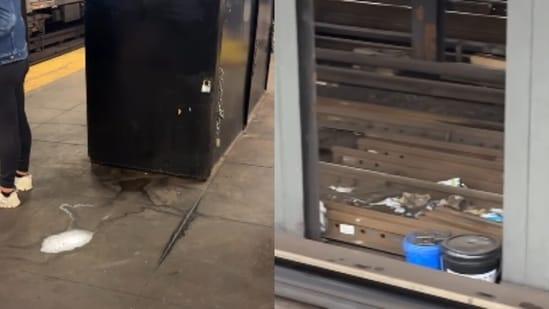Indian Vlogger’s Viral Video Spotlights Dirty NYC Subway
The internet is buzzing after an Indian travel vlogger called out the condition of New York City’s subway stations. In a clip shot and shared by Nitish Advitiy, scenes of urine-stained walls, overflowing garbage, and tired infrastructure are laid bare for the world to see. The Instagram reel quickly went viral, drawing strong reactions from viewers around the globe.
View this post on Instagram
“New York subway dirtiest subway,” reads the caption on the reel, as Advitiy guides the viewer through a station littered with refuse and marked by clear signs of neglect. What was meant to be a visual travel diary turned into a digital flashpoint, triggering thousands of comments and conversations on urban sanitation, infrastructure, and inequality.
Timeline of Events
- Video posted: The reel was uploaded to Instagram, rapidly gaining traction with over 451,000 views in just a few days.
- Public reacts: Comments began flooding in from New Yorkers, tourists, and officials alike.
- Widespread discussion: The post made its way to forums, blogs, and news outlets, becoming a trending conversation starter across platforms.
In many ways, videos like Advitiy’s act as digital postcards of experience—though clearly not the kind the tourism board might send out.
Official Statements
While the MTA has yet to comment directly on Advitiy’s video, the caption he included provides a succinct summary:
“The New York City subway’s reputation for being dirty stems from a combination of factors including heavy usage, ageing infrastructure, insufficient cleaning protocols, and a lack of consistent maintenance.”
This isn’t new. The MTA has long faced criticism for its outdated systems, ongoing delays, and systemic challenges. Budget constraints, union negotiations, and the sheer scale of the subway—spanning over 400 stations—make total upkeep a daunting task.
Community Response
The comments on Advitiy’s video offer a fascinating, if messy, cross-section of public opinion. Many viewers expressed agreement, some even relief, that someone had the courage to post what they felt too familiar with already.
Here’s a look at what users are saying:
- “This is exactly what I saw when I visited NYC. The smell in the subways is unbearable, and no one seems to care anymore.”
- “New York is an incredible city, but the subway experience is honestly the worst part of it.”
- “I’ve been to India and honestly expected worse in NYC. But it was shocking to see such neglect in a first-world city.”
- “London and Tokyo manage clean subways with large footfall. NYC has no excuse.”
There were, of course, defenders as well:
- “The subway runs 24/7 and transports millions daily. Of course it won’t be spotless, but it’s functional.”
- “Every big city has its problems. You can’t judge NYC by one station.”
If anything, the video managed to crack open a discussion many locals have lived with for decades, but perhaps grown numb to over time.
How Clean Should a Subway Be?
That’s really the central question. What’s acceptable cleanliness in a city transit system that never sleeps? Should New Yorkers expect working escalators, spotless platforms, and an odor-free ride—or does the sheer volume of daily commuters mean we have to make trade-offs?
Compared to the subways in Tokyo or Singapore, the NYC system does seem to lag in maintenance. But those systems also operate under different social and governmental structures, with stricter penalties for littering and, frankly, different budgets and civic culture.
You might find it amusing—or depressing—that tourists are now filming subway situations as part of their social media itinerary. For some, it’s a badge of horror. For others, it’s the grungy charm of New York City. The reactions say a lot about our perceptions of public space and who it’s really designed for.
What’s Next?
For all the heated debate, this viral moment could nudge some important conversations forward. Is enough funding reaching these stations? Are cleaning crews being supported—or understaffed and underpaid? And what does it say when out-of-town vloggers can catch what local agencies seem to miss?
Change won’t be instant. But perhaps criticism, even from the outside, has a role to play. When a 60-second Instagram clip does more to push the conversation than years of policy papers, maybe it’s time to listen.
Whether or not you agree with Nitish Advitiy’s take, there’s no disputing the power of a well-shot walk through a grimy underground. It’s not just about aesthetics—it’s about accountability, dignity, and shared space in a global icon of a city.
Final Thoughts
Scrolling through the comments, one recurring idea stands out: disappointment. Not just at the state of the station in the video, but at what viewers had expected of New York to begin with. Sometimes, the clash between myth and reality feels strongest underground—where millions of steps echo through stained tiles and flickering lights.
Critiques like Advitiy’s might sting, but they also raise the bar. A city that boasts such cultural weight should, perhaps, strive for cleaner rails and clearer tracks—if not for image, then for the people who ride every day.

